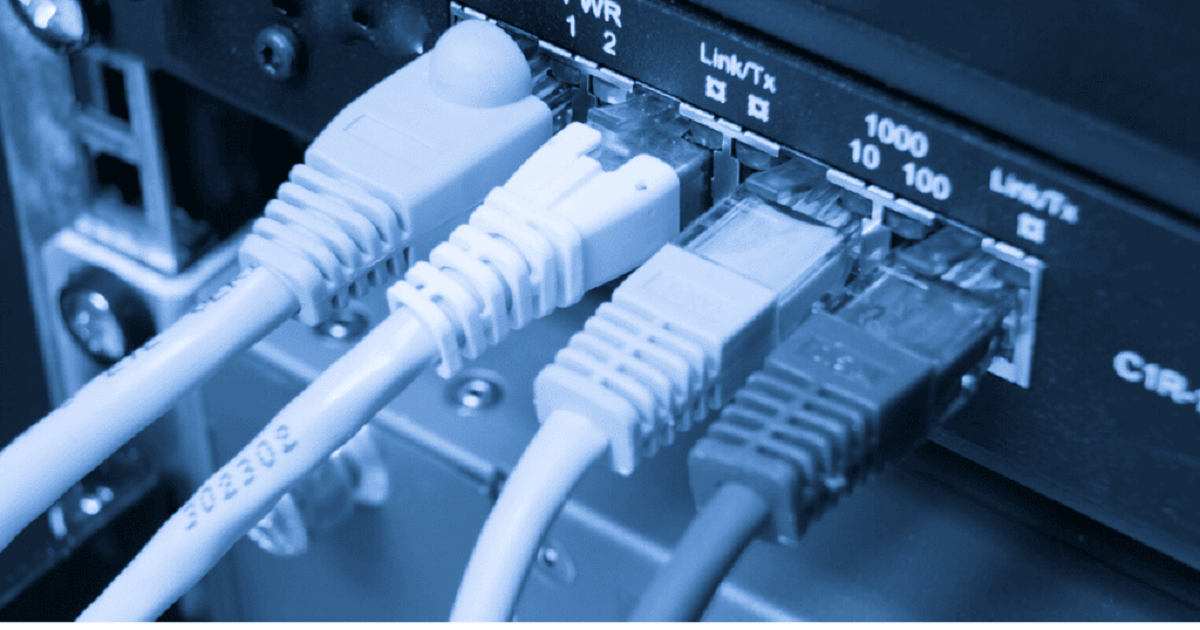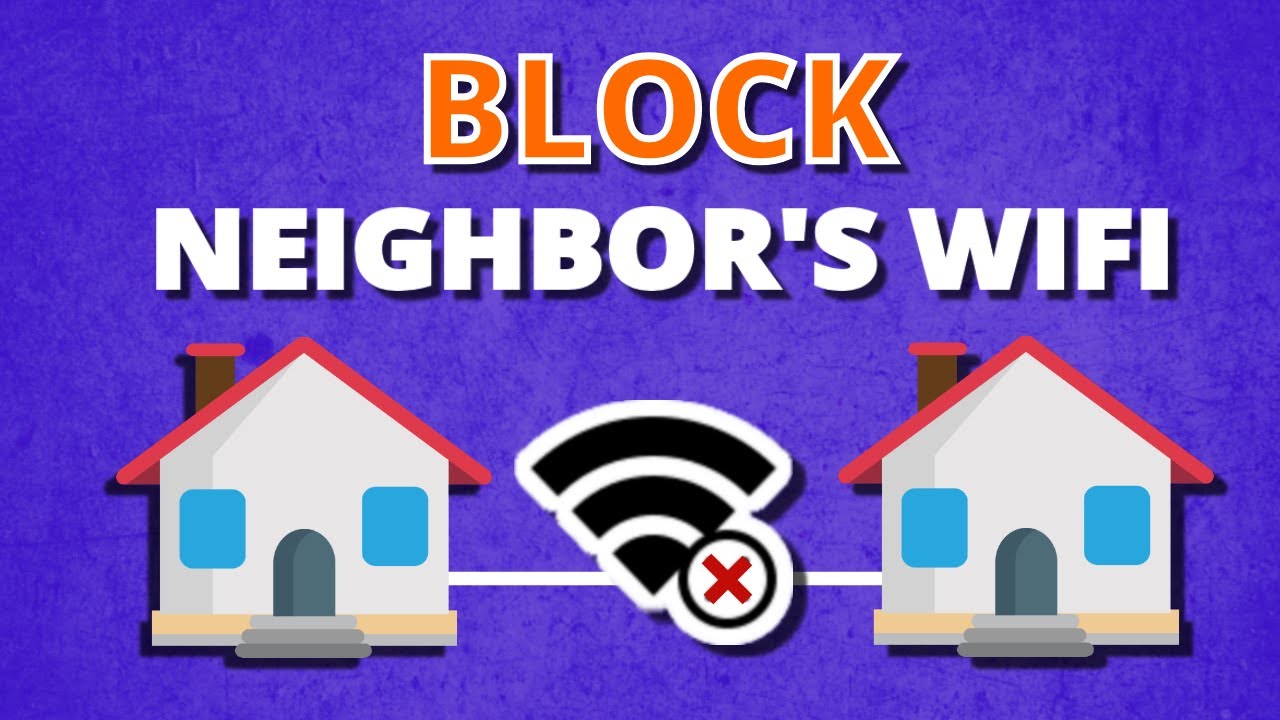Introduction
Welcome to this article on how to prevent Wifi jamming. In today’s world, where technology plays a pivotal role in our daily lives, a reliable and secure internet connection is crucial. However, there is a potential threat that can disrupt our Wifi networks and cause significant inconvenience – Wifi jamming.
Wifi jamming refers to the intentional interference with Wifi signals by malicious individuals or devices. This interference can render your Wifi network useless, causing disruptions in internet connectivity and affecting various devices connected to it. It is essential to understand what Wifi jamming is, how it works, and why it is a concern in order to effectively prevent it.
In this article, we will delve into the concept of Wifi jamming, explore common techniques used by jammers, and discuss practical ways to safeguard your Wifi network. By implementing these preventive measures, you can ensure a stable and uninterrupted internet connection, safeguard your sensitive data, and enjoy a seamless online experience.
What is Wifi jamming?
Wifi jamming is an intentional act of disrupting and interfering with Wifi signals. It involves the use of specialized equipment or software to generate powerful radio frequency signals that overpower or block the regular Wifi signals in a given area. The purpose behind Wifi jamming can vary, ranging from malicious intent to simply causing inconvenience or disruption.
Wifi signals operate within the radio frequency spectrum, which is also shared by various other wireless devices such as cordless phones, Bluetooth devices, and microwaves. Wifi jammers exploit this shared frequency range to flood the airspace with noise or signals that interfere with the proper functioning of Wifi networks.
When Wifi signals are jammed, the affected area experiences a significant drop in signal strength or complete loss of connectivity. This disruption affects all Wifi-enabled devices in the vicinity, including smartphones, laptops, tablets, smart home devices, and IoT devices. As a result, users may encounter difficulties in accessing the internet, streaming media, making VoIP calls, or transferring data.
Wifi jamming can occur in various settings, including public spaces such as cafes, airports, or hotels, as well as residential areas. It can be carried out by individuals with malicious intent seeking to breach the security of Wifi networks or disrupt the communications of others. Additionally, Wifi jamming devices are readily available for purchase online, making it easier for anyone to engage in such disruptive activities.
It is important to note that Wifi jamming is considered illegal in many jurisdictions, as it is a violation of telecommunications laws and regulations. Engaging in Wifi jamming without proper authorization can result in severe penalties and legal consequences.
Now that we have a basic understanding of what Wifi jamming is, let us explore how exactly it works and the reasons why it is a concern we should address.
How does Wifi jamming work?
Wifi jamming works by exploiting the vulnerabilities and weaknesses in the wireless communication protocols used by Wifi networks. It involves transmitting powerful radio frequency signals that interfere with the normal functioning of Wifi signals, causing disruptions or complete loss of connectivity. Let’s explore the two main methods used in Wifi jamming:
1. Deauthentication Attacks: One common method used in Wifi jamming is a deauthentication attack. This type of attack targets the handshake process between a device and a Wifi access point. During this process, the device and the access point exchange authentication messages to establish a secure connection. A jammer can send deauthentication packets to both the device and the access point, impersonating either one. This disrupts the handshake process, leading to a loss of connection and preventing the device from accessing the Wifi network.
2. Physical Layer Interference: Another approach to Wifi jamming involves interfering with the physical layer of wireless communication. In this method, jammers use high-powered transmitters to flood the airspace with noise or signals that overpower the regular Wifi signals. This interference can disrupt the communication between the Wifi access point and devices, rendering the network unusable within the affected area.
Wifi jammers usually employ devices specifically designed to generate and transmit interference signals. These devices can vary in size and complexity, ranging from small handheld devices to more powerful and sophisticated equipment. Some jammers even come with adjustable power levels and frequency settings, allowing the jammer to target specific Wifi channels or frequency ranges.
It is worth noting that Wifi jamming is not a foolproof method and its effectiveness can be affected by factors such as distance, obstacles, and the strength of the jamming signal compared to the Wifi signal. However, even brief disruptions or intermittent interference can be highly disruptive and frustrating for Wifi users.
Now that we have explored how Wifi jamming works, let’s delve into why it is a concern and the potential risks it poses to Wifi networks and their users.
Why is Wifi jamming a concern?
Wifi jamming poses significant concerns for both individuals and organizations that rely on a stable and secure Wifi network. Here are some reasons why Wifi jamming is a cause for concern:
1. Disruption of Connectivity: Wifi jamming can disrupt internet connectivity, causing inconvenience and frustration for Wifi users. Interruptions in communication can impact online activities such as browsing, streaming, gaming, and video conferencing. In critical situations, such as emergency situations or professional environments, Wifi jamming can have severe consequences.
2. Potential Security Breaches: Wifi jammers can aid attackers in bypassing security measures by forcing devices to disconnect from a secure Wifi network. While disconnected, devices may automatically connect to rogue access points or networks set up by hackers. This can potentially expose sensitive information, such as login credentials, personal data, or financial details, to malicious individuals.
3. Disruption of IoT and Smart Home Devices: With the growing number of connected devices in our homes, Wifi jamming can disrupt the functionality of IoT devices and smart home systems. This can impact automation and control systems, smart appliances, security systems, and other devices that rely on a stable Wifi connection to function properly.
4. Impact on Business Operations: In a business setting, Wifi jamming can disrupt day-to-day operations. It can hinder productivity by causing delays in communication, affecting online transactions, disrupting internal systems, and hampering the use of cloud resources. This can result in financial losses, reputation damage, and reduced customer satisfaction.
5. Legal and Regulatory Consequences: Engaging in Wifi jamming is illegal in many jurisdictions due to its interference with legal wireless communications. Individuals or organizations found guilty of Wifi jamming can face severe penalties and legal consequences, including fines and potential imprisonment.
6. Potential Disruption in Public Spaces: Wifi jamming in public spaces, such as airports, cafes, or shopping centers, can cause chaos and hinder emergency communication systems. It can impact the ability of individuals to make emergency calls or access vital information during critical situations.
Given these concerns, it is crucial to take proactive measures to prevent Wifi jamming and safeguard the integrity and reliability of Wifi networks. In the following sections, we will explore effective prevention techniques to mitigate the risks posed by Wifi jammers.
Common techniques used for Wifi jamming
Wifi jamming can be performed using various techniques and tools that exploit vulnerabilities in Wifi networks. Understanding these common techniques can help in implementing effective preventive measures. Here are some of the most frequently used techniques for Wifi jamming:
1. Deauthentication Attacks: Deauthentication attacks involve sending deauthentication frames to devices connected to a Wifi network. These frames impersonate the Wifi access point, instructing devices to disconnect from the network. By continuously sending deauthentication frames, jammers can disrupt the connectivity of devices within range and effectively jam the network.
2. Beacon Flooding: The beacon is a signal periodically transmitted by Wifi access points to announce their presence and provide network information to nearby devices. In a beacon flooding attack, jammers flood the airspace with a high volume of fake beacon frames. This overwhelms the legitimate network beacons, making it difficult for devices to connect to the real Wifi access points.
3. Denial of Service (DoS) Attacks: DoS attacks aim to overload a Wifi network’s resources, rendering it unable to respond to connection requests. By flooding the network with excessive traffic or by targeting specific network elements, jammers can disrupt communication between devices and access points, effectively jamming the Wifi network.
4. MAC Spoofing: Every Wifi enabled device has a unique hardware address known as a MAC address. MAC spoofing involves forging or changing the MAC address of a device to impersonate another device on the network. Jammers can use this technique to confuse the network and disrupt communication, leading to Wifi jamming.
5. RF Jamming: RF (Radio Frequency) jamming involves transmitting powerful interference signals on the same frequency or frequency range as Wifi signals. By overwhelming the Wifi signals with noise or strong signals, jammers disrupt the communication between devices and Wifi access points, effectively blocking the Wifi network within the affected area.
6. Jamming Devices: There are various commercially available Wifi jamming devices that are designed specifically for disrupting Wifi networks. These devices can generate and transmit high-power signals that interfere with Wifi signals, causing disruptions and network outages.
It is important to note that engaging in Wifi jamming is illegal in many jurisdictions. These techniques are shared for educational purposes to create awareness about the potential vulnerabilities in Wifi networks and to encourage the implementation of effective preventive measures.
Now that we have discussed how Wifi jamming can be carried out, it is time to explore practical measures to prevent Wifi jamming and protect your Wifi network.
How to prevent Wifi jamming
Preventing Wifi jamming requires implementing a combination of technical and security measures to protect your Wifi network. By following these preventive measures, you can minimize the risk of falling victim to Wifi jamming attacks:
- Use strong encryption: Ensure that your Wifi network is protected with robust encryption, such as WPA2 or WPA3. Encryption adds an extra layer of security by encrypting the data transmitted over the network, making it more difficult for jammers to interfere with the signals.
- Change default passwords: Most Wifi devices come with default usernames and passwords, which are easily guessable and exploited by attackers. Change the default login credentials of your Wifi router and other network devices to unique, strong passwords to prevent unauthorized access and protect against potential jamming attempts.
- Enable MAC filtering: Enable MAC filtering on your Wifi router to restrict access to only authorized devices. MAC filtering allows you to create a whitelist of MAC addresses for devices that are allowed to connect to your network, blocking any unauthorized devices, including potential jammers.
- Update firmware regularly: Keep your Wifi router and other network devices up to date with the latest firmware. Firmware updates often include security patches and bug fixes that address vulnerabilities, reducing the risk of exploitation by jammers.
- Use a firewall: Implement a firewall on your network to monitor and control incoming and outgoing traffic. A firewall can help detect and block suspicious activities, including potential jamming attempts, providing an additional layer of protection for your Wifi network.
- Maintain distance from potential jammers: Position your Wifi router away from windows or public areas where it is easily accessible to outsiders. This reduces the chances of jammers physically interfering with your Wifi network by using specialized jamming devices in close proximity.
- Monitor network traffic: Regularly monitor your network traffic for any unusual or suspicious activities. Use network monitoring tools or specialized Wifi management software to detect any anomalies or signs of potential jamming attempts.
Implementing these preventive measures can significantly reduce the risk of Wifi jamming and enhance the security and reliability of your Wifi network. By staying vigilant and taking proactive steps to protect your network, you can ensure a stable and uninterrupted internet connection for yourself and your devices.
Use strong encryption
One of the most effective ways to prevent Wifi jamming is to use strong encryption for your Wifi network. Encryption adds a layer of security by encoding the data transmitted over the network, making it extremely difficult for attackers or jammers to decrypt and interfere with the signals. Here’s how you can ensure strong encryption for your Wifi network:
- Choose WPA2 or WPA3: Make sure to select either WPA2 (Wi-Fi Protected Access II) or the newer WPA3 protocol as the encryption method for your Wifi network. These encryption standards are much more secure than the outdated WEP (Wired Equivalent Privacy) protocol, which is highly vulnerable to attacks.
- Create a strong passphrase: When setting up your Wifi network, choose a long and complex passphrase that includes a combination of uppercase and lowercase letters, numbers, and special characters. Avoid using commonly known words or personal information that can be easily guessed.
- Regularly update your Wifi password: Change your Wifi network password on a regular basis, preferably every few months. This helps to prevent unauthorized access and ensures that even if someone manages to obtain your password, they won’t have long-term access to your network.
- Disable WPS: Wifi Protected Setup (WPS) is a convenient feature that allows for simplified device connectivity to your network. However, it also presents a security vulnerability that can be exploited by jammers. Disable WPS on your router to eliminate this potential risk.
- Utilize a strong pre-shared key (PSK): When setting up your Wifi network, use a strong pre-shared key (PSK) for authentication. A PSK is a password or passphrase used to authenticate devices connecting to the network. Ensure that the PSK is unique, complex, and not shared with unauthorized individuals.
By using strong encryption, you enhance the security of your Wifi network and make it much more challenging for jammers to disrupt the communication. Remember to keep your encryption protocols up to date and periodically review and update your Wifi network security settings to stay one step ahead of potential threats.
Change default passwords
Changing default passwords is a crucial step in preventing Wifi jamming and enhancing the security of your Wifi network. Many Wifi devices come with default login credentials, such as usernames and passwords, which are well-known and often easily accessible to attackers. By changing these default passwords, you significantly reduce the risk of unauthorized access and potential jamming attempts. Here’s how you can effectively change default passwords:
- Access your router’s administration panel: To change the default password, you need to access your router’s administration panel. Open a web browser and enter your router’s IP address (usually 192.168.1.1 or 192.168.0.1) in the address bar. Enter the username and password provided with your router, or consult the router’s user manual to find the default login credentials.
- Choose a strong, unique password: When changing the password, choose a strong and unique password that is not easily guessable. It should contain a combination of uppercase and lowercase letters, numbers, and special characters. Avoid using common words, personal information, or sequential patterns that can be easily cracked or guessed.
- Update login credentials for other network devices: Besides changing the router’s password, ensure that you change the login credentials for other network devices connected to your Wifi network. This includes security cameras, smart home devices, and any other network-enabled devices. It is essential to secure all entry points to your network.
- Implement a password management system: Consider using a password manager to securely store and manage your login credentials. A password manager can generate strong, random passwords for you and automatically fill them in when needed. This reduces the risk of using weak passwords or reusing passwords across different accounts.
- Regularly update passwords: It is recommended to change your Wifi network password periodically, ideally every few months. This ensures that even if someone manages to obtain your password, they won’t have long-term access to your network. Regularly updating passwords adds an extra layer of security to your Wifi network.
Changing default passwords is a simple yet effective way to prevent unauthorized access to your network and minimize the risk of jamming attempts. By implementing unique and strong passwords, you significantly increase the security of your Wifi network and reduce the likelihood of falling victim to Wifi jamming attacks.
Enable MAC filtering
Enabling MAC filtering is an additional layer of security that can help prevent Wifi jamming and unauthorized access to your Wifi network. MAC filtering allows you to control which devices can connect to your network by creating a whitelist of MAC addresses. A MAC address is a unique identifier assigned to each network interface card (NIC) of a device. By enabling MAC filtering, you can restrict network access to only those devices whose MAC addresses are authorized. Here’s how you can enable MAC filtering:
- Access your router’s administration panel: Open a web browser and enter your router’s IP address in the address bar. Log in using your username and password. If you are unsure of your router’s IP address or login credentials, consult the router’s user manual or contact the manufacturer for assistance.
- Review connected devices: Locate the section in your router’s settings that displays the list of connected devices. Note down the MAC addresses of the devices you want to authorize for network access.
- Enable MAC filtering: Look for the “MAC filtering” or “Wireless MAC Filter” option in your router’s settings. Enable this feature to start using MAC filtering as an access control measure.
- Add MAC addresses to the whitelist: Within your router’s settings, you will find an option to add MAC addresses to the whitelist. Enter the MAC addresses of the authorized devices one by one. Save the changes to apply the settings.
- Test the MAC filtering feature: After enabling MAC filtering and adding MAC addresses to the whitelist, test the feature by attempting to connect a device that is not on the authorized list. The device should be denied access to the network.
By enabling MAC filtering, you create an additional barrier for potential jammers, as their devices will not be on the whitelist of authorized MAC addresses. However, keep in mind that MAC addresses can be spoofed or cloned by sophisticated attackers. Therefore, it is important to regularly check and update the list of authorized MAC addresses, and combine MAC filtering with other security measures for a comprehensive approach to network security.
Remember to save your router’s settings and verify that MAC filtering is functioning correctly. With MAC filtering in place, you can have greater control over which devices can connect to your Wifi network, thereby minimizing the risk of unauthorized access and potential Wifi jamming attempts.
Update firmware regularly
Regularly updating the firmware of your Wifi router is crucial for ensuring the security and stability of your network. Firmware updates often include important security patches, bug fixes, and performance enhancements that address vulnerabilities and protect against potential Wifi jamming attacks. Here’s why and how you should update your router’s firmware regularly:
Why update firmware?
Firmware updates are released by router manufacturers to improve the functionality, security, and performance of their devices. By keeping your router’s firmware up to date, you can:
- Fix vulnerabilities: Firmware updates often address known security vulnerabilities that can be exploited by hackers or jammers. Regularly updating firmware helps to protect your network from potential attacks and unauthorized access.
- Improve performance: Firmware updates can enhance the performance and stability of your router. They may include optimizations and bug fixes that ensure smoother and more reliable operation, leading to an improved Wifi experience.
- Stay compliant: In some cases, regulatory standards, such as those related to wireless security protocols, may evolve over time. Firmware updates ensure that your router remains compliant with the latest standards and guidelines.
How to update firmware:
Updating the firmware of your router typically involves these steps:
- Check for firmware updates: Visit the manufacturer’s website or access your router’s administration panel to check for available firmware updates. Look for a “Firmware Upgrade” or “Firmware Update” option in the router settings.
- Download the latest firmware: If an update is available, download the latest firmware version provided by the manufacturer. Ensure that you select the correct firmware for your router model to avoid compatibility issues.
- Backup router settings: Before proceeding with the firmware update, it is recommended to backup your router’s current settings. This ensures that you can restore your preferences in case anything goes wrong during the update process.
- Apply the firmware update: Follow the manufacturer’s instructions to apply the firmware update. This process typically involves uploading the downloaded firmware file to the router’s administration panel and allowing the update to complete.
- Verify successful update: After the firmware update is applied, verify that the update was successful by checking the router’s settings or administration panel. Ensure that the firmware version is updated to the latest available version.
Remember to update your router’s firmware regularly, ideally following the manufacturer’s recommended schedule or whenever new updates are available. This ensures that your router remains equipped with the latest security patches and improvements, reducing the risk of potential Wifi jamming attempts and enhancing the security and performance of your network.
Use a firewall
Implementing a firewall is an essential measure to protect your Wifi network from potential Wifi jamming attacks. A firewall acts as a barrier between your network and external threats, monitoring and controlling incoming and outgoing network traffic. By using a firewall, you can strengthen the security of your network and prevent unauthorized access. Here’s why and how to use a firewall for your Wifi network:
Why use a firewall?
Using a firewall provides several benefits for protecting your Wifi network:
- Network traffic control: A firewall allows you to monitor and control incoming and outgoing network traffic to detect and block unauthorized access attempts or suspicious activities. It creates a barrier between your internal network and external networks, effectively filtering out potential threats.
- Intrusion prevention: Firewalls can detect and prevent unauthorized access attempts by scanning network traffic for known attack patterns or malicious intents. They act as a first line of defense, blocking unauthorized connections and reducing the risk of Wifi jamming attacks.
- Malware and virus protection: Some firewalls incorporate advanced security features, such as antivirus and malware protection, to detect and block malicious software and viruses. This additional layer of protection helps to prevent infected devices from spreading malware throughout the network.
- Logging and monitoring: Firewalls often provide logging and monitoring capabilities, allowing you to track network activity and identify potential security breaches or unusual patterns. This information can be invaluable for detecting and mitigating suspicious activities, including potential Wifi jamming attempts.
How to use a firewall:
Here are some steps to effectively use a firewall for your Wifi network:
- Enable the firewall feature: Access your router’s administration panel and enable the firewall feature, if available. Look for a “Firewall” or “Security” section in the settings. Consult your router’s user manual or manufacturer’s website for specific instructions on enabling the firewall.
- Configure firewall settings: Once the firewall is enabled, configure the settings based on your security needs. This may include defining rules to allow or deny specific types of traffic or specifying access control lists (ACLs) to filter incoming and outgoing connections.
- Regularly update firewall software: Keep the firewall software up to date by installing the latest firmware or software updates provided by the manufacturer. Regular updates ensure that your firewall has the latest security patches and improvements.
- Monitor firewall logs: Regularly review the logs generated by the firewall to identify any suspicious activity or potential security incidents. Being proactive in monitoring the firewall logs can help detect and mitigate potential Wifi jamming attempts or other security threats.
Using a firewall provides a crucial layer of protection for your Wifi network, helping to prevent unauthorized access and potential Wifi jamming attacks. Make sure to enable and properly configure the firewall, keep it updated, and regularly monitor its logs for any signs of suspicious activity.
Maintain distance from potential jammers
Maintaining distance from potential jammers is a practical and simple step to reduce the risk of Wifi jamming. By positioning your Wifi router away from windows, public areas, or easily accessible locations, you can minimize the opportunity for attackers or jammers to physically interfere with your Wifi network using specialized jamming devices. Here’s why and how maintaining distance can be an effective preventive measure:
Why maintain distance?
Maintaining distance from potential jammers can help mitigate the risk of Wifi jamming in the following ways:
- Reduce signal interception: By positioning your Wifi router away from windows and public areas, you minimize the chance of signal interception. This makes it more difficult for attackers or jammers to analyze or manipulate the Wifi signals to perform jamming attacks.
- Limit access to physical manipulation: Physical proximity to your Wifi router increases the risk of unauthorized access or manipulation. By placing the router in a secure location, inaccessible to potential jammers, you reduce the likelihood of physical interference or tampering with the device.
- Minimize signal strength: Wifi signals lose strength as they propagate through physical obstacles, such as walls or furniture. By positioning the router further away from potential jammers, you decrease the chances of their jamming signals effectively interfering with your network’s signal strength.
- Protect privacy: Keeping your Wifi router away from public areas helps to maintain privacy and prevents unauthorized individuals from attempting to gain physical access or tamper with your network settings or devices.
How to maintain distance:
To effectively maintain distance from potential jammers, consider the following steps:
- Choose an optimal placement: Position your Wifi router centrally within your home or office to ensure maximum coverage while avoiding placement near windows, doors, or public areas. This minimizes the chances of physical interference or unauthorized access.
- Consider signal range: Understand the signal range of your Wifi router and adjust its placement accordingly. Ensure that the router’s signal does not extend too far beyond your property, as this increases its vulnerability to potential jammers in neighboring areas.
- Use signal optimization techniques: Employ techniques such as antenna positioning or signal power adjustment to optimize your Wifi network. This can help to focus the signal within your intended coverage area and minimize signal leakage that may attract unwanted attention or interference.
- Secure the physical environment: Ensure that your Wifi router is placed in a secure and locked location to prevent unauthorized access. Consider installing surveillance cameras or alarms to deter potential physical tampering attempts.
Maintaining distance from potential jammers is an often overlooked but crucial step in preventing Wifi jamming. By placing your Wifi router in an optimal location and securing it from physical tampering, you can significantly reduce the risk of unauthorized interference and enhance the overall security and reliability of your Wifi network.
Monitor network traffic
Regularly monitoring network traffic is an important proactive measure to detect and prevent potential Wifi jamming attempts. By keeping a close eye on the patterns and behavior of network traffic, you can identify any unusual or suspicious activities that may indicate an ongoing jamming attack or unauthorized access to your Wifi network. Here’s why and how you should monitor network traffic:
Why monitor network traffic?
Monitoring network traffic allows you to:
- Detect anomalies: By analyzing network traffic, you can identify any abnormal patterns or sudden spikes in data transfer that might indicate illicit activities, such as Wifi jamming attempts or unauthorized access attempts.
- Identify potential threats: Network traffic monitoring helps to identify any reconnaissance or probing activities by potential attackers or jammers. You can spot any unusual connections or attempts to access your network, enabling you to take immediate action.
- Prevent security breaches: By monitoring network traffic, you can promptly detect any security breaches or unauthorized access to your Wifi network. This allows you to respond quickly and mitigate potential risks before any significant damage occurs.
- Optimize network performance: Monitoring network traffic provides a valuable insight into how your Wifi network is being utilized. You can identify excessive bandwidth usage, network bottlenecks, or devices that may be causing disruptions, allowing you to optimize performance and ensure a smooth Wifi experience.
How to monitor network traffic:
To effectively monitor network traffic, consider the following approaches:
- Use network monitoring tools: There are various network monitoring tools and software available that can analyze and monitor network traffic in real-time. These tools can provide detailed statistics, logs, and alert notifications for any suspicious activities or anomalies.
- Set up intrusion detection systems (IDS): An IDS helps detect and alert you to potential security threats by monitoring network traffic patterns and comparing them against known attack signatures. IDS systems can identify potential Wifi jamming attempts or unauthorized access to your network.
- Analyze log data: Regularly review logs generated by your router or network devices to track network activity. Pay attention to any unusual or unexpected events, such as repeated connection failures or unidentified devices attempting to establish a connection.
- Enable logging on your firewall: If your router or firewall has logging capabilities, ensure they are enabled. Firewall logs can provide valuable information about incoming and outgoing traffic, allowing you to identify any abnormal patterns or potential security breaches.
By actively monitoring network traffic, you can quickly detect and respond to any potential Wifi jamming attempts or security breaches. Regularly review network traffic logs and leverage network monitoring tools to stay informed about the behavior of your Wifi network, enabling you to take necessary actions to protect and maintain the integrity of your Wifi network.
Conclusion
Wifi jamming can pose a significant threat to the stability, security, and functionality of your Wifi network. It is crucial to understand the nature of Wifi jamming, how it works, and the potential risks it presents. By implementing preventive measures, you can minimize the risk of falling victim to Wifi jamming attacks and protect your network and connected devices.
In this article, we explored various techniques that jammers use to disrupt Wifi networks, including deauthentication attacks, physical layer interference, and beacon flooding. We also discussed the importance of strong encryption, changing default passwords, and enabling MAC filtering to enhance the security of your Wifi network. Updating firmware regularly, using a firewall, maintaining distance from potential jammers, and monitoring network traffic are additional measures that can significantly prevent Wifi jamming.
Preventing Wifi jamming requires a comprehensive and proactive approach to network security. By staying vigilant, implementing the recommended preventive measures, and regularly reviewing and updating your network settings, you can mitigate the risks associated with Wifi jamming and ensure a stable and secure Wifi connection.
Remember, securing your Wifi network is an ongoing process. Stay informed about the latest security practices, remain cautious about potential threats, and adapt your preventive measures accordingly. By doing so, you can enjoy a reliable and uninterrupted Wifi experience while keeping your network and data safe from Wifi jamming attacks.

























